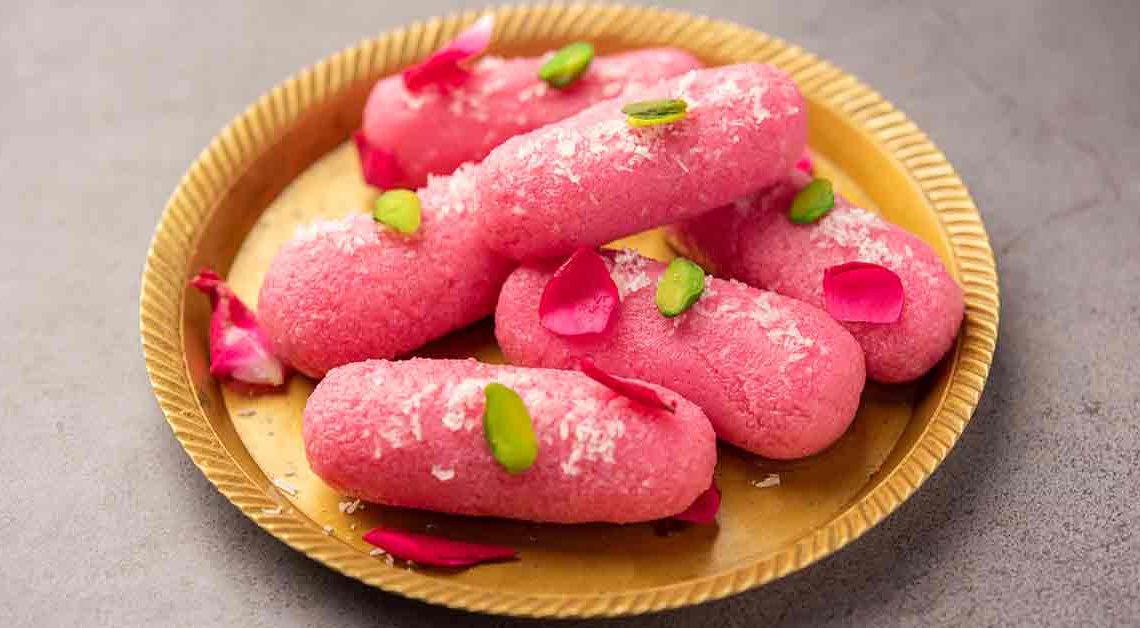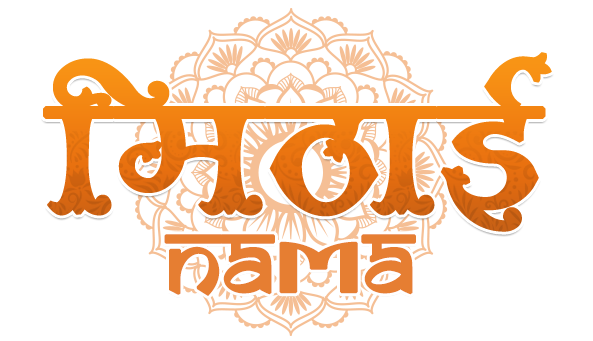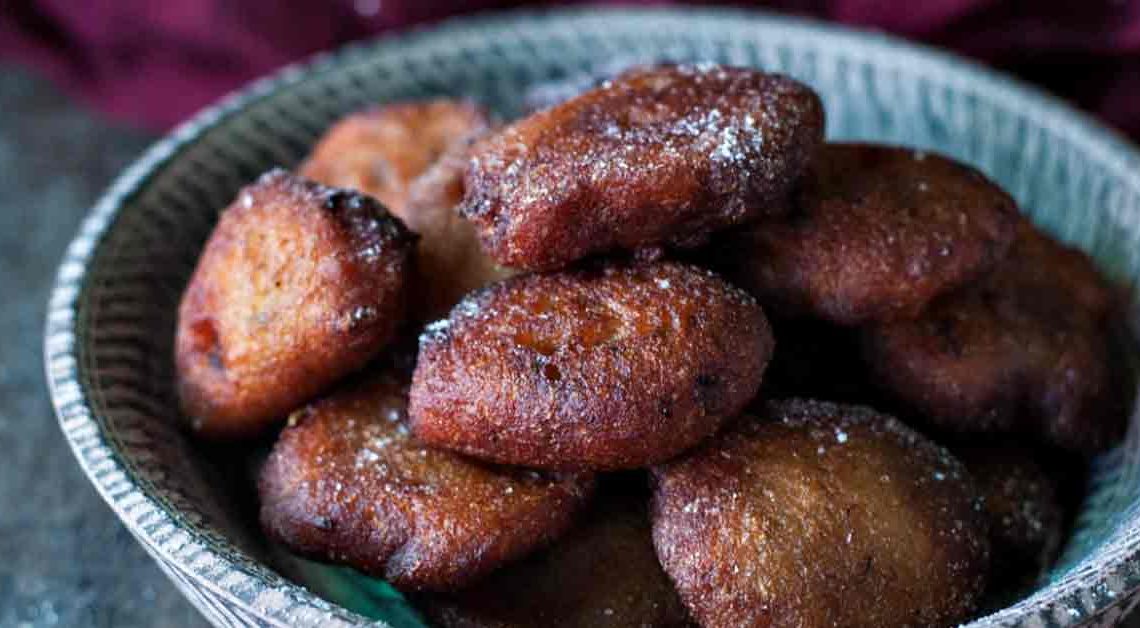Delightful Charm: Pink Chum Chum

Welcome to Mithainama! a world of culinary delight that’s as vibrant as it is delicious – the Pink Chum Chum Chronicles! Embark on a journey that tantalizes your taste buds and mesmerizes your senses with the rosy allure of one of South Asia’s most beloved desserts – the Pink Chum Chum.
Dive into a symphony of flavors that dance on your palate, as we unravel the secrets behind this delectable confectionery. From its humble origins in the colorful streets of Bengal to gracing the grandest of festive spreads, has captured hearts across cultures and generations.
Join us as we explore the artistry behind crafting the perfect chum chum – soft, spongy cottage cheese dumplings delicately soaked in rose-infused sugar syrup. Discover the variations that span across regions, each with its own unique twist, from the elegant rose swirls adorning North Indian mithai shops to the tropical coconut-infused renditions found in the South.
Come with us on this Pink Chum Chum adventure – where every bite is a step into a world of rosy enchantment!
Origin of Pink Chum Chum
The origin can be traced back to the Indian subcontinent, particularly to the state of West Bengal. Chum Chum, also known as “Cham Cham” or “Chomchom,” is a popular Bengali sweet that holds a special place in the region’s culinary heritage.
The rosy hue is achieved by adding a touch of food color or natural ingredients like beetroot juice to the sugar syrup, imparting a delightful pink shade to the sweet. The popularity has spread far beyond Bengal, becoming a cherished treat in festivals, celebrations, and special occasions across the Indian subcontinent.
As time has passed, variations of Chum Chum have emerged, each with its own local twists and flavors. While the original recipe remains a favorite, different regions have incorporated unique ingredients such as coconut, saffron, and cardamom to create diverse renditions of this beloved dessert.
History of Pink Chum Chum
The history is intertwined with the evolution of traditional Indian sweets and the culinary innovations of the Bengal region. While specific historical records might be limited, the story is part of the broader narrative of Indian confectionery.
The origins of Chum Chum can be traced back to the mid-19th century in the state of Bengal, India. It is believed that the renowned Bengali sweet-maker, Nabin Chandra Das, played a significant role in popularizing this delicacy. Nabin Chandra Das, who is also credited with inventing the Rasgulla, is said to have experimented with various forms of chhena-based sweets, leading to the creation of Chum Chum.
The evolution of Chum Chum into its pink variant likely emerged later, with the introduction of food coloring and innovative variations in syrup flavoring. The pink hue is often achieved by infusing the sugar syrup with rose essence or beetroot juice, enhancing both the visual appeal and taste of the sweet.
Cultural Significance
Pink Chum Chum holds significant cultural value, particularly in the Indian subcontinent, where sweets are an integral part of traditional celebrations, rituals, and daily life. Its cultural significance extends beyond its delectable taste to encompass various aspects of society, heritage, and social interactions.
Festive Celebrations: It is often prepared and served during festivals and special occasions. Whether it’s Diwali, Durga Puja, Eid, weddings, or birthdays, this sweet finds its place on the dessert platter, symbolizing the joy and abundance of the event. Its pink color adds a festive and vibrant touch to the celebrations.
Regional Identity: In Bengal, Chum Chum is more than just a sweet – it’s a cultural emblem. Its popularity and association with the region contribute to a sense of regional pride and identity. Bengali sweets, including it, are celebrated both locally and internationally.
Religious Offerings: Sweets hold significance in religious rituals and offerings. It might be offered to deities in temples or used as prasad (divine offering) during puja ceremonies, signifying devotion and seeking blessings.
Where is Pink Chum Chum Famous?
It is particularly famous in the Indian subcontinent, with its popularity centered in the region of Bengal. Here are some places where Pink Chum Chum is famous:
West Bengal, India: This is the birthplace and heartland of its popularity. In cities like Kolkata and other towns across the state, Chum Chum, including the pink variant, is a staple in sweet shops and a cherished treat during festivals and celebrations.
Bangladesh: Given its historical connection to Bengal, it is also enjoyed in Bangladesh. It’s a favorite dessert during Bengali festivals and special occasions.
Other Indian States: While it has roots in Bengal, its popularity has spread to other Indian states as well. In states like Odisha, Assam, and Tripura, where Bengali cuisine and sweets are appreciated and can be found in sweet shops and at festivals.
Interesting Facts and Trivia
Certainly, here are some interesting facts and trivia related to Pink Chum Chum:
- The pink color of Chum Chum isn’t just for aesthetics. In Indian culture, the color pink is often associated with celebration, joy, and festivity, making it a perfect choice for special occasions.
- Crafting the perfect dessert requires skill and precision. The chhena dough needs to be kneaded well to achieve the right texture, and the dumplings should be cooked until soft and spongy but not overcooked.
- It is often garnished with slivers of pistachios, almonds, or silver leaf (varak) to enhance its visual appeal, making it a centerpiece of dessert displays during festive occasions.
- The process of making it involves curdling milk to obtain chhena, which is then worked into the dough for the dumplings. This technique is a cornerstone of many Indian sweets.
- Beyond its literal sweetness, it is often seen as a symbol of sharing love and happiness, making it a cherished treat for gifting.
Did You Know?
Enjoying a delightful serving of Pink Chum Chum isn’t just a feast for your taste buds – it offers some surprising benefits too!
- It is made from chhena, a form of cottage cheese. This means it’s a source of protein, essential for cell repair, muscle growth, and overall body function.
- The combination of carbohydrates from the chhena and the sugar syrup in it can provide a quick energy boost, making it a great choice for a small pick-me-up during the day.
- Dairy-based chhena is also rich in calcium and phosphorus, vital for maintaining strong bones and teeth, and supporting nerve and muscle function.
- Treating yourself during celebrations and special occasions can uplift your mood and enhance the joy of the moment, supporting mental well-being.
- Depending on the ingredients used, it can offer some antioxidants, such as those present in rose essence, contributing to overall health.







